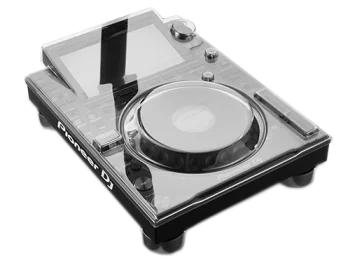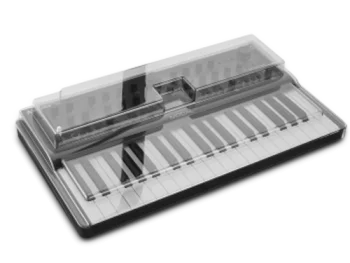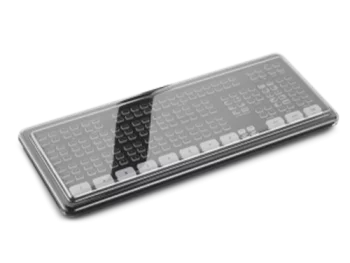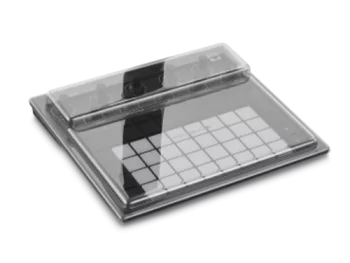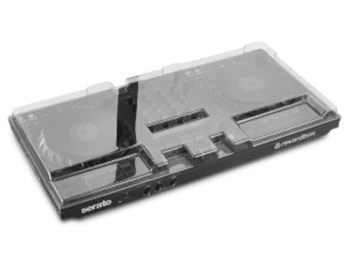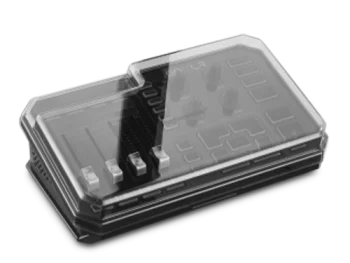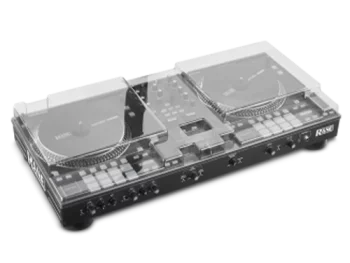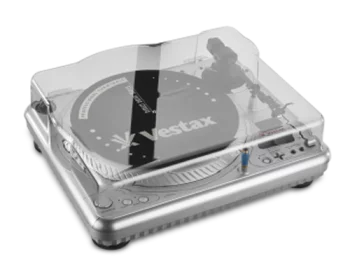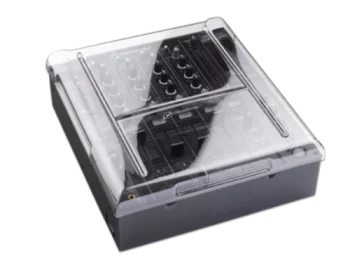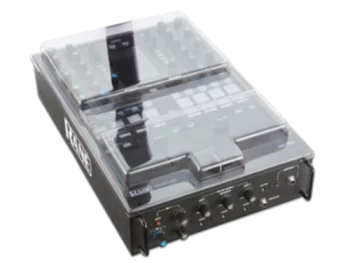Considered by many (well, probably most) to be the best DJ turntable ever (but probably not the best turntable ever), the Technics SL-1200 and stable-mate SL1210 are absolute legendary amongst club and home spinners alike. The 1200 is a pure design classic – it’s not just a great looking piece of gear, but it functions brilliantly too. It can even be found in the London Design Museum. Not many pieces of DJ technology can be so universally loved and still in use to this day.
Parent company Panasonic recently resurrected the 1200 once again, with the launch of the Mk7 in 2019, no doubt in some part due to the huge amount of demand for all things vinyl related, especially the SL. This launch followed on from the more ‘premium’ models that were released back in 2016 – the 1200GR at around £1,300 and the jaw-dropping 1200G, which at launch, scanned through the checkout at around £2,800!
A Brief History
The SL-1200 commenced manufacture from October 1972 and was designed by Panasonic/Matsushita under the Technics brand name. The ‘S’ stands for Stereo, whilst the ‘L’ means Player. Whilst probably the most used DJ deck in the world, its original use was instead for home audiophiles. The strong, torquey motor, direct drive, ease of use and bullet-proof build quality soon made it popular amongst DJs (live, in clubs or at home) and in radio stations.
With it’s strong performance capabilities, the Technics ‘wheels of steel’ were adopted by ground-breaking New York DJs DJs such as Grand Wizard Theodore, Afrika Bambaataa and Grandmaster Flash in the mid-1970s. As they experimented with the SL1200 decks, they developed scratching and mixing techniques when they found that the motor would continue to spin at the correct speed. The player soon found its way into top clubs around the world and became the defacto standard. Most booths today may sport the best mixers and media players, but most will still have a pair of 1200s positioned and ready to spin.
Specific Model History
The SL-1200 was introduced in 1972 as an evolution to the popular SL-1100. It was dubbed “The Middle Class Player System”.
MK2
The SL-1200 Mark 2 was introduced in 1979 as an update and represented a culmination of Technics turntable Innovations, including the move to a fader speed control. It soon found its way into discos and radio stations for airplay because of its vibration-damping ability and resistance to feedback. Model numbers indicated colour: the 1200 (silver) and 1210 (matte black).
MK3
Released in 1989, ten years after the initial launch, the Mk3 continued to evolve and is released as a matte black finish like the MK2, gold RCA plugs, and a small gold-foil Technics label on the back. A pitch reset button was also added. In 1997, the 1200MK3D hit the stores and carried even more tweaks, including a more accurate pitch adjustment, although the 0% centre ‘click’ was removed (Grrrr!)
In 1997 and to commemorate 2 million sales, the SL-1200LTD was released in a batch of just 5,000 individually numbered machines. These units came with gaudy/gorgeous, (depending on your personal tastes) gold trimmings atop a gloss piano-black finish. These are still highly desirable today and fetch big money. We even have one for use on the Decksaver NAMM exhibition stand and it always grabs the attention of passers-by.
MK4
The SL-1200 Mark 4 was introduced in 1996 and was only available in Japan/ Southeast Asia markets. It had a matte black finish and was really aimed at the hi-end audiophile market rather than DJs.
MK5
Released in the first year of the new century, the usability was improved upon with an adjustable brake speed under the platter and LED lighting. The counterweight also came with a graduation scale.
To commemorate 30 years of the 1200, this higher-end model sported a +/-16% digital pitch adjustment, blue lights, and improved load adjustment mechanism on the tonearm; all wrapped up in a high gloss, metalflake paint job.
MK6
SL-1200MK6-K & SL-1200MK6-S turntables were released in 2008 in Japan, with minor improvements including improved tonearm mounting, oxygen-free copper wires, improved vibration damping in the body, improvements to the pitch control accuracy and better LEDs It’s a pretty scarce model to track down these days.
Grand Class SL-1200 Series
In 2016, Technics relaunched the 1200 with a complete ground-up redesign. The intent was to create a new system for Hi-Fi use and to redefine the direct-drive turntable reference.
Two models were initially announced at that year’s Las Vegas CES: The SL-1200G and GAE which were aluminium affairs, with a 3 layer turntable system and a coreless twin-rotor motor. It even had the ability to play old vinyl at 78 RPM! The very limited edition GAE was built as a 50-year celebration of Technics and restricted to just 1,200 units. The first 300 sold out in Japan in less than 30 minutes.
SL-1200GR
Announced in January 2017, the GR model is a stripped-down budget version of the G selling at a RRP of £1,299. It differs slightly in body construction to its big brother (it uses a more traditional cast aluminium design similar to the older decks and a one-piece cast platter). The motor has slight differences too. The unit is still readily available and can be found for less than £1,000 in some retailers.
MK7
So on to the MK7 – the first ‘new’ Technics DJ turntable in approximately nine years. These models are built in Malaysia as opposed to Japan though and have a Super OEM kind of feel to them. Design is inherently the same as the old models and carries a coreless direct-drive motor. Other new features include adjustable starting torque and brake speed, detachable terminals and reverse playback.
Why do most (professional) DJs still use Technics 1200 turntables?
Most professional DJs who play vinyl (or timecode DVS) use Technics in the club or on the road. Much of this will be down to ‘habit’ as they have always been the club standard. There have been many imitators, but no company has dislodged the crown from Technics. 1200s are familiar and reliable and can last a lifetime. Specialist service companies have begun to spring up all over the internet to help owners keep their kit up to scratch.
Buying 1200s
The new vinyl revolution is driving the price of second-hand units sky high, with units often selling for significantly more than the original RRP. My first pair of new 1210s cost me £500 in the early 1990s. I’ve seen second-hand pairs going for nearly double that in 2020.
They are still a worthwhile investment, but they are not entirely bomb-proof. Fortunately though, spare parts are plentiful. Here are a few niggles to look out for if taking the plunge….
- Pitch Control: Is it working accurately? Look at the strobe light and slide the pitch up and down to make sure speeds are correct.
- Anti-skate Mechanism: The dial beside the arm bearing should pull the arm away from the platter. Set it to zero and on a record, see if the arm sweeps away. Check also the arm base lock works and that the arm lift lever is present and works ok, without sticking.
- Platter Bearing: Spin the platter by hand in both directions to ensure it runs smoothly, remove the platter and check that the rubber underneath is all as it should be and in place and that the magnets are firmly mounted and not damaged.
- Screws: Check under the turntable and under the platter to make sure all the screws are present and correct. If missing it could be that someone has had a go at fixing something.
- RCA Plugs and Ground Cable: These have a habit of getting shut in flight cases when closing so check for damage
- Arm & Arm Bearings: The arm should move smoothly and have no play in the bearings, this can only be checked by feel. Also check that the arm is in its correct S-shape with no kinks or dings. Make sure the counterweight is present too!
- Headshell: Check that the headshell clamps firmly in the screw fitting and that the screws underneath are not loose.
Look carefully and there are still bargains to be had. And one thing is for certain; if looked after, there is no reason why any SLs will last until the next vinyl revival.

